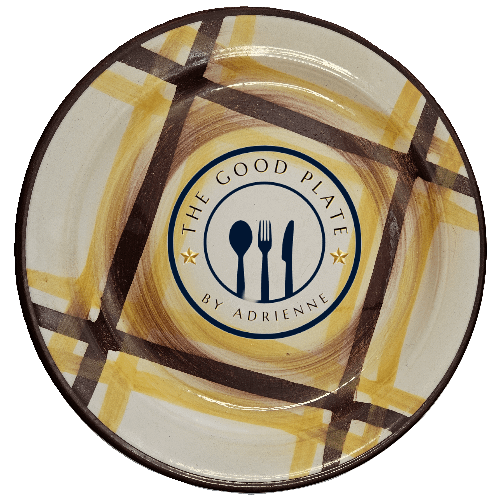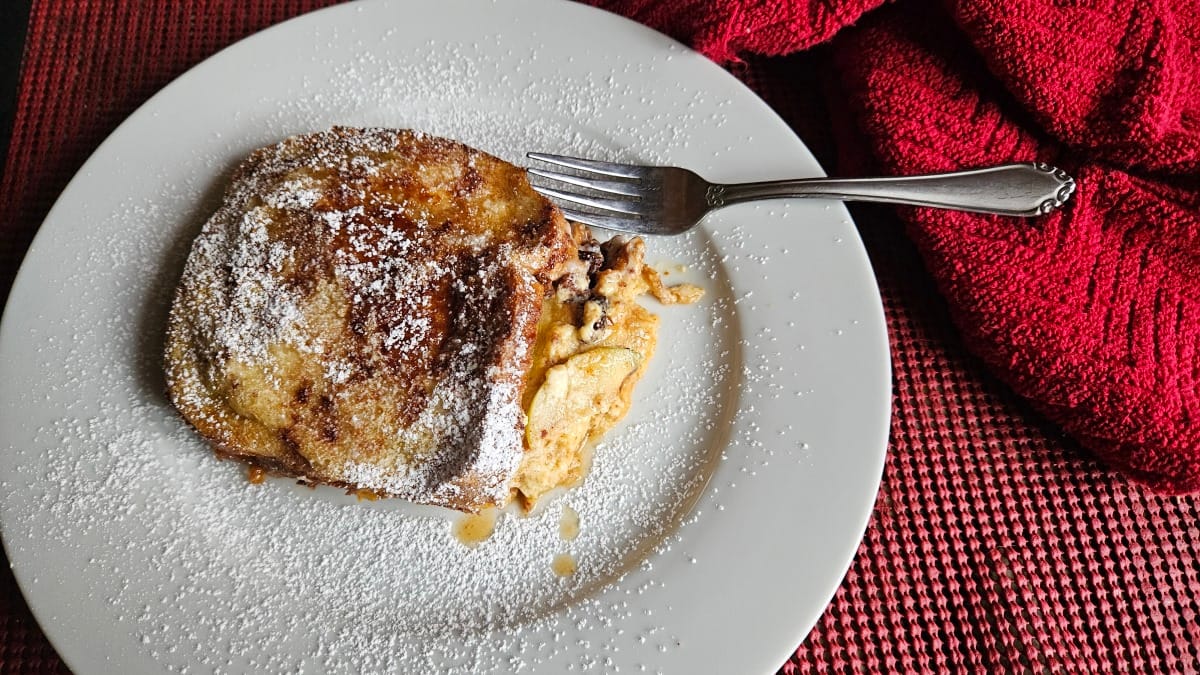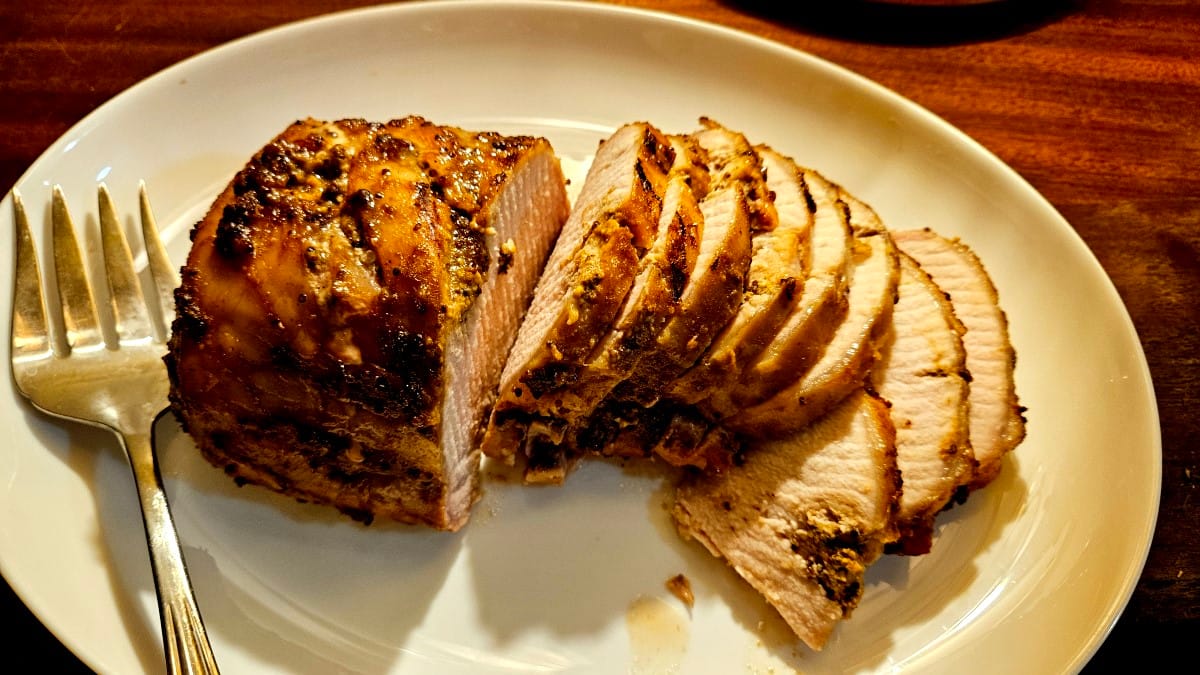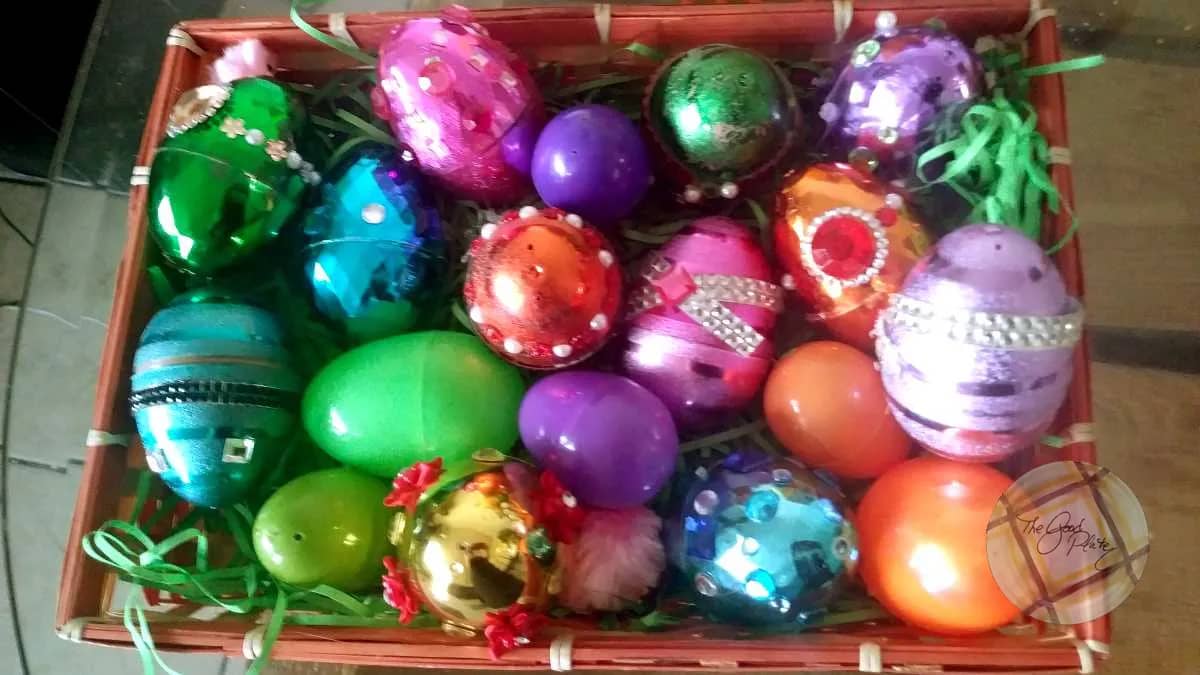
These silk ties and naturally dyed Easter eggs are fun to make, inexpensive, and stunning to look at. Happy decorating!
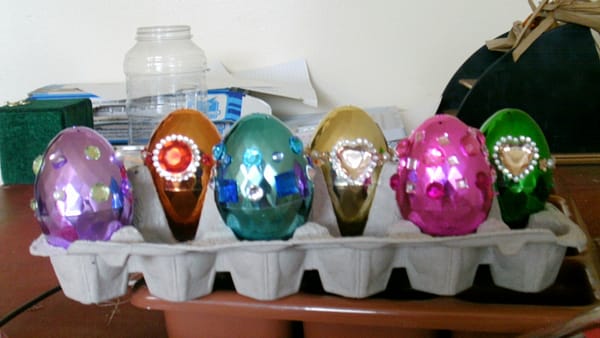
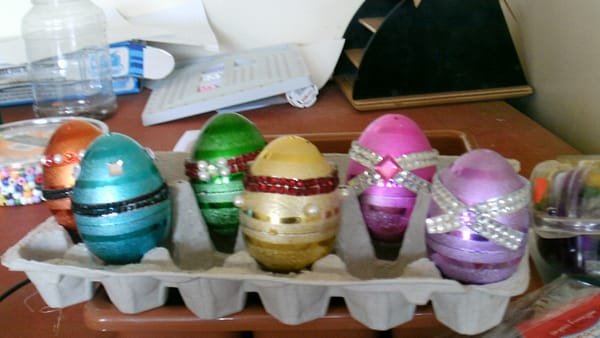
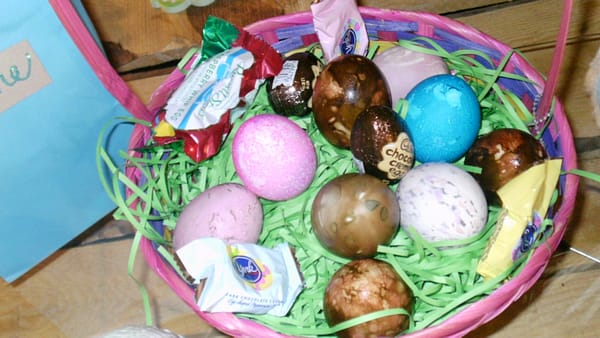
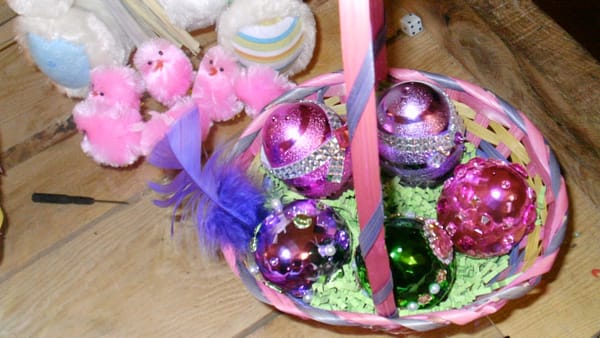
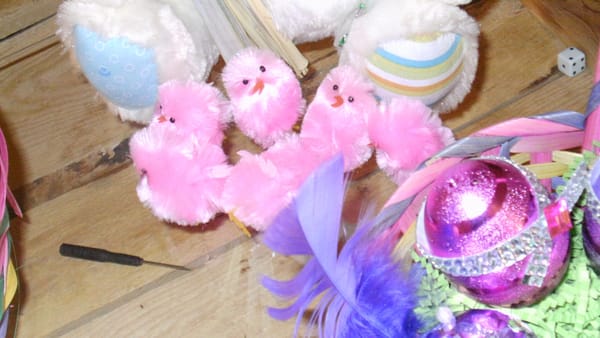
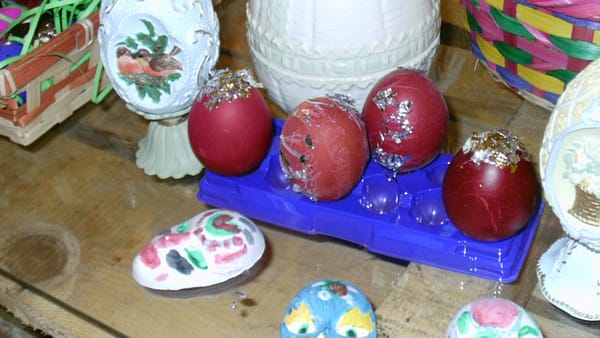
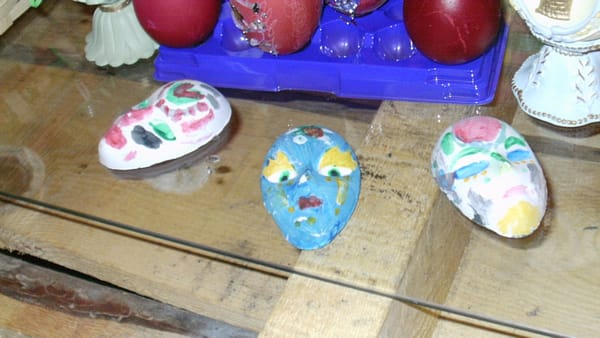
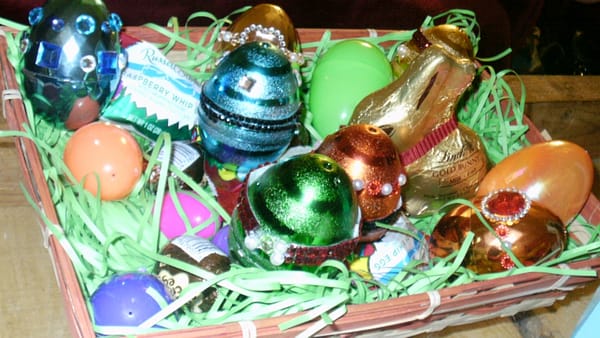
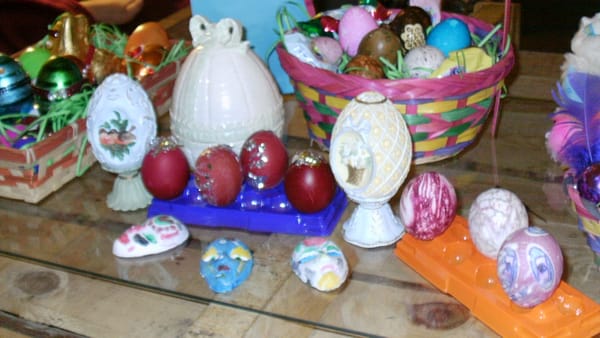

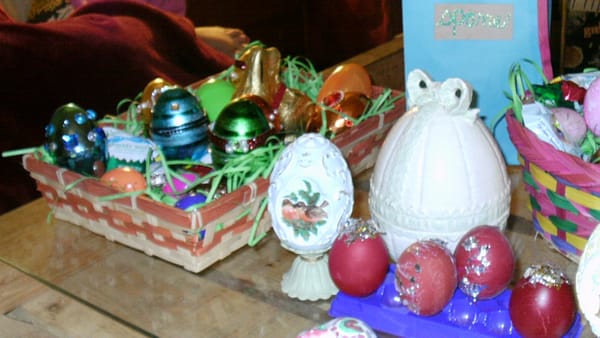
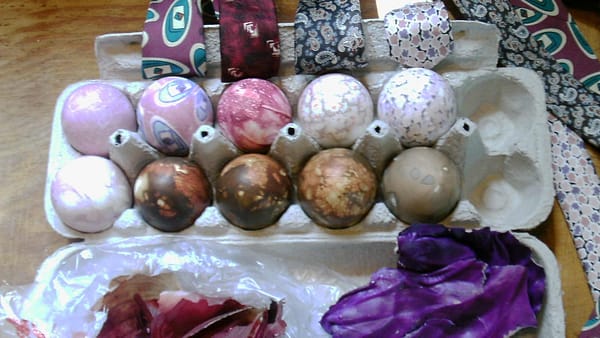
Wow! Was I tired when I finished the last egg last night? It seems I have been doing nothing but decorating eggs since Thursday afternoon. But, that’s okay, I really enjoy doing it. I love looking at the completed tablescape and seeing all the decorated eggs. But maybe the best part of this was that it cost me virtually nothing. I could re-purpose two ancient undershirts, one badly stained white school shirt, a host of silk ties, leftover accumulated “bling,” and onion skins that had collected in my dry goods drawer.
When Spane was a little, little guy, the counter of the corner store had lovely Easter eggs on it. I had never seen eggs like that, and when I asked the owner how they were made, she said, in halting English, that the eggs were dyed with onion skin. I was hooked and finally took pictures of my creations in 2010.
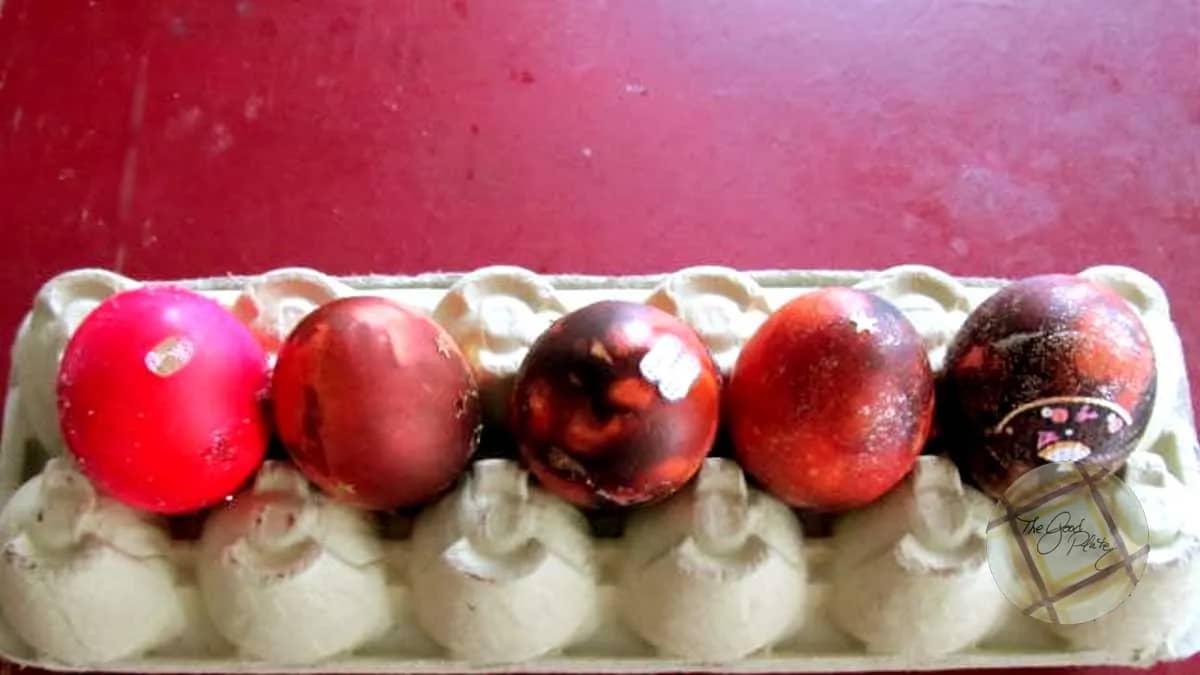
I wanted to do more naturally dyed eggs this year, but I had also seen some nice eggs on Pinterest. Please feel free to visit my Easter Board on Pinterest to see some of my inspirations. The one I wanted to do the most was the Silk Tie-dyed eggs. I purchased silk ties at thrift shops last year for a Father’s Day project, and I wanted to use them. I have to say; they are my favorites.
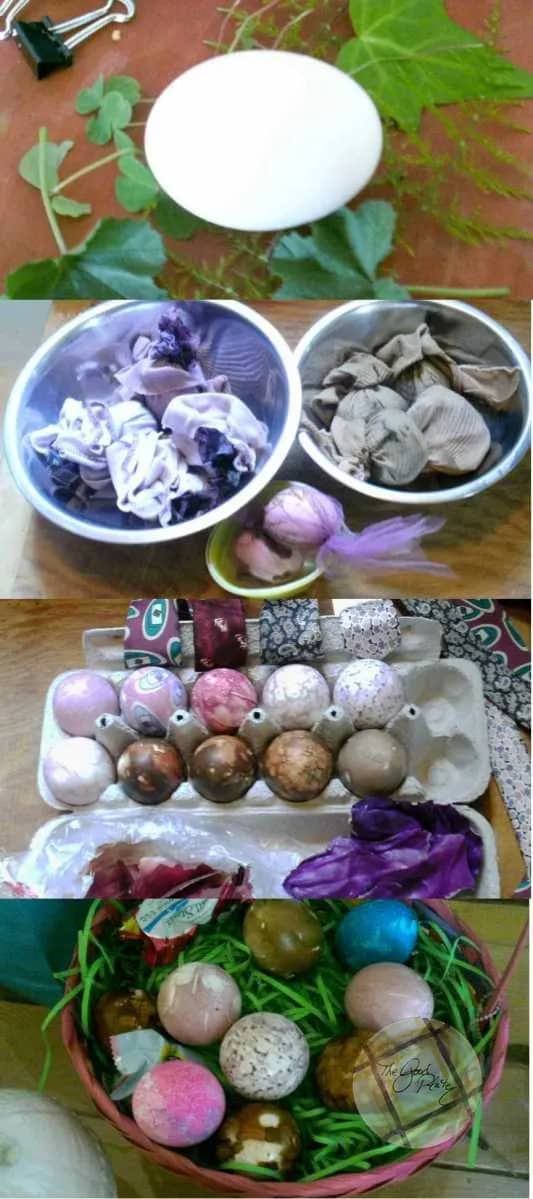
The color that silk ties made the water was perfect for my Leaf Decorated Eggs. I simply gathered interesting leaves from the outdoors and wrapped the eggs in tulle.
Silk Tie Dyed Eggs
For these beautiful eggs to work properly, you must use 100% silk. It doesn’t have to be ties. It could be anything that is made of silk and has a small pattern. You can usually find used silk ties at your local resale or thrift shop, and you are making a contribution to those less fortunate. Cut the tie so you get a large enough piece of silk to cover the egg completely. Also, cut a piece of some other white cloth or very light cloth a little larger. An old pillowcase is perfect. Have ready thick rubber bands or good quality twist ties.
Wrap the uncooked egg in a piece of silk, the shiny side touching the egg. Then wrap that in the white cloth, and secure it either with the rubber band or twist tie. Do this for all the eggs you want to silk dye.
Fill a pot full of water, and add a quarter cup of white vinegar. Gently place the eggs in the pot, and bring it to a boil. Let the eggs boil for about 5 minutes, then turn off the heat and let them sit for about an hour.
When you unwrap the eggs, they will have taken on the print pattern of the tie. You can brush them with a little vegetable oil if you want them to be shiny.
Red Onion Dyed Eggs
You can use either red or yellow onions for this. The red onion skin comes a little darker. Simply get a bag at the grocer’s and fill it up with loose onion skins. The market will not charge you for it, as you’re actually doing them a favor.
You want to wrap the onion skins as tightly around the uncooked egg as possible, then wrap it in white cloth, and secure that with a rubber band or twist tie.
Fill a pot full of water, and add a quarter cup of white vinegar. Gently place the eggs in the pot, and boil them. Let the eggs boil for about 5 minutes, then turn off the heat and let them sit for about an hour.
Leaf Dyed Eggs
Go to your backyard or around the neighborhood and pick some interesting-looking leaves. They should be smaller than the egg. Use a piece of white tulle or pantyhose to secure the leaf or leaves you are putting on the egg. Secure that with a rubber band or twist tie.
For this to work, you will need colored water, so use food dye in whatever color you desire in the water with the vinegar.
Fill a pot full of water, and add a quarter cup of white vinegar. Gently place the eggs in the pot, and bring it to a boil. Let the eggs boil for about 5 minutes, then turn off the heat and let them sit for about an hour.
Red Cabbage Dyed Eggs
These are almost the same method as the Red Onion Dyed Eggs, except you use red cabbage instead.
Fill a pot full of water, and add a quarter cup of white vinegar. Gently place the eggs in the pot, and bring it to a boil. Let the eggs boil for about 5 minutes, then turn off the heat and let them sit for about an hour.
Spring Bling Eggs
Ok, these aren’t real eggs at all. They are hollow plastic eggs. I just decorated them with rhinestones and ribbon to try to evoke a Fabergé egg. Many years ago, I was lucky enough to know someone who had a Fabergé egg, and I actually got to hold the lovely little thing in my hand.
The only caveat to making these eggs is you don’t want to decorate around the seal because then you won’t be able to open them to stuff them with a piece of chocolate or another surprise.
The other good thing about these eggs is that you don’t have to throw them away. You can use them year after year.
Please have a wonderful holiday and have fun making some of these eggs with your family.
